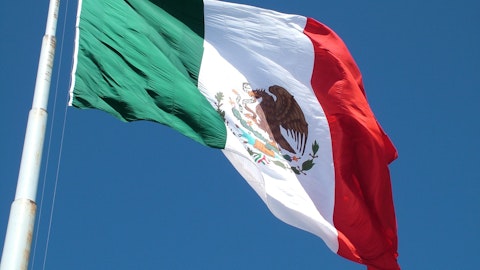The foreign exchange market, commonly known as Forex, is the largest trading market globally. Its easy accessibility appeals to a wide audience, yet it is essential to grasp that Forex trading comes with substantial risks. This article explores these risks and provides guidance on managing them effectively.
Unpredictable market volatility in Forex Trading
Market volatility is a well-known and significant risk in Forex trading, often exceeding the volatility found in other business sectors. This unpredictability can manifest in rapid and substantial fluctuations in currency values, influenced by various global events and economic indicators.

Copyright: samranwara31 / 123RF Stock Photo
Understanding Volatility Through Examples
For instance, consider how political events like elections, policy changes, or geopolitical tensions can lead to sudden shifts in a currency’s value. During the Brexit negotiations, the British pound experienced significant volatility, swinging widely with each political development. Similarly, the US dollar often reacts to changes in Federal Reserve policies or economic reports like GDP growth and employment data.
Economic crises, like the 2008 financial crisis or the COVID-19 pandemic, can also lead to high volatility. During these periods, traders might witness extreme highs and lows in currency values as investors react to the uncertainty and rapidly changing economic landscape.
Leveraging Volatility for Profit
While this volatility poses risks, it also creates opportunities for astute Forex traders. The key is in understanding how to leverage these fluctuations:
Technical Analysis: Use tools like candlestick charts, trend lines, and Bollinger bands to identify potential entry and exit points. For example, a trader might use these tools to spot a developing uptrend in a previously declining currency, signaling a potential buying opportunity.
News-Based Trading: Stay informed about global events and economic news. A trader who anticipates the impact of a major political event on a currency could position their trades accordingly, capitalizing on the resultant volatility.
Risk Management Techniques: Implementing stop-loss orders and setting take-profit levels can protect against sudden market movements. For instance, if a trader expects volatility but isn’t sure of the direction, they might use a straddle strategy, placing orders on both sides of the current price.
Mastering Volatility Trading
Successful trading in a volatile Forex market demands a balance of informed strategies, real-time market analysis, and emotional control. Traders need to stay agile, constantly reassessing their positions and being ready to respond quickly to market changes. It’s a dynamic process of buying low and selling high, but with the added complexity of a rapidly changing market environment. Read this article to learn about
Unexpected Changes in Interest Rates and Their Impact on Forex Trading
Interest rate changes, often unforeseen, are a significant factor affecting the Forex market. These shifts can lead to substantial fluctuations in currency values, impacting traders’ strategies and positions.
How Interest Rates Affect Forex Markets: Examples and Analysis
For instance, when the U.S. Federal Reserve (Fed) raises interest rates, it typically leads to a strengthening of the U.S. dollar. This is because higher interest rates offer better returns on investments denominated in that currency, attracting more foreign capital. An example of this was seen in the early 2020s, when the Fed’s rate adjustments led to noticeable shifts in the value of the dollar against other currencies.
Conversely, if a country’s central bank lowers interest rates, it can lead to a weakening of its currency. For example, when the European Central Bank (ECB) announced lower interest rates or introduced quantitative easing measures, the Euro often saw a decrease in value compared to other major currencies.
Strategies for Navigating Interest Rate Changes

Traders need to be proactive in monitoring and responding to these changes:
Stay Informed: Regularly follow updates from major central banks like the Fed, ECB, Bank of England, and others. Be aware of scheduled meetings and announcements, as these are times when interest rate changes are likely to occur.
Economic Calendar: Utilize an economic calendar to keep track of interest rate decisions and other significant economic events. This tool helps in planning trading strategies around these key announcements.
Analysis of Currency Pairs: Understand how different currency pairs might be affected by these changes. For instance, if the Fed increases rates while the ECB maintains or decreases rates, the USD/EUR pair might see the dollar strengthen against the Euro.
Hedging Strategies: Consider hedging strategies to mitigate risk. For instance, if you have a position that might be negatively impacted by an expected interest rate decrease, you might open a counter-position in a currency pair that could benefit from this change according to this article on forex trading strategies.
Low liquidity
Forex is among the most liquid markets in the world because people are always ready to buy and sell currencies. Based on this, people have minimal impact on the price of the assets in the market. Moreover, the forex market is huge. Even with the high liquidity experienced, there are times when it’s very low. The forex market experiences low liquidity during the weekends and holidays or if there is a financial crisis. When the market suffers from low liquidity, experts advise increasing your spreads.
Not getting paid by counterparty
One of the first things a Forex trader does is find a service provider, a.k .a. a broker. The broker will give you several tools to trade and all the indicators you need to carry out your trade. Also, your broker will connect you to liquidity providers. If the broker is not trusted, you can lose your money and not get paid. The liquidity provider or broker may not pay you.





